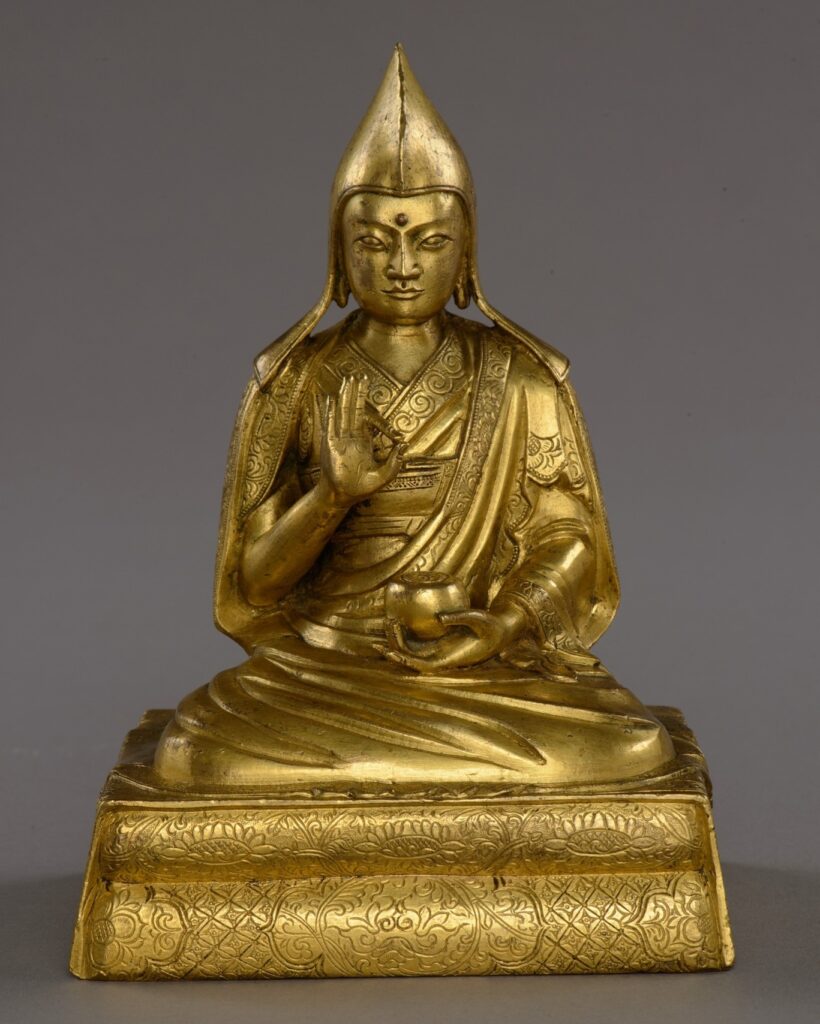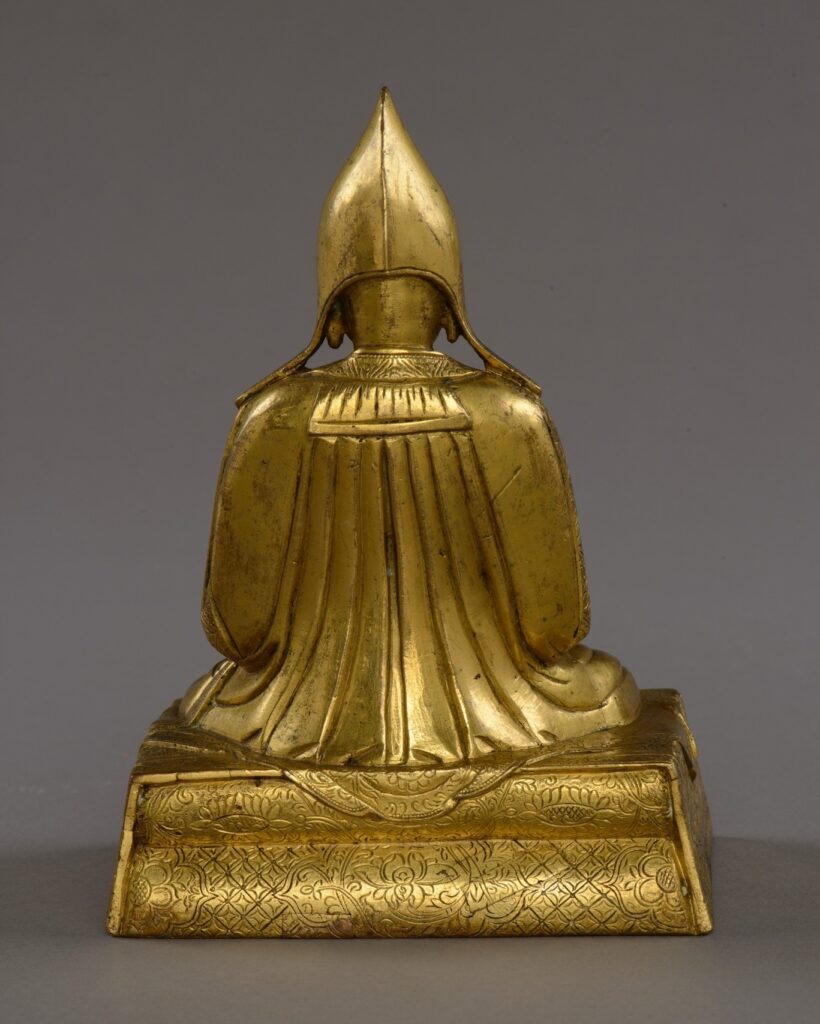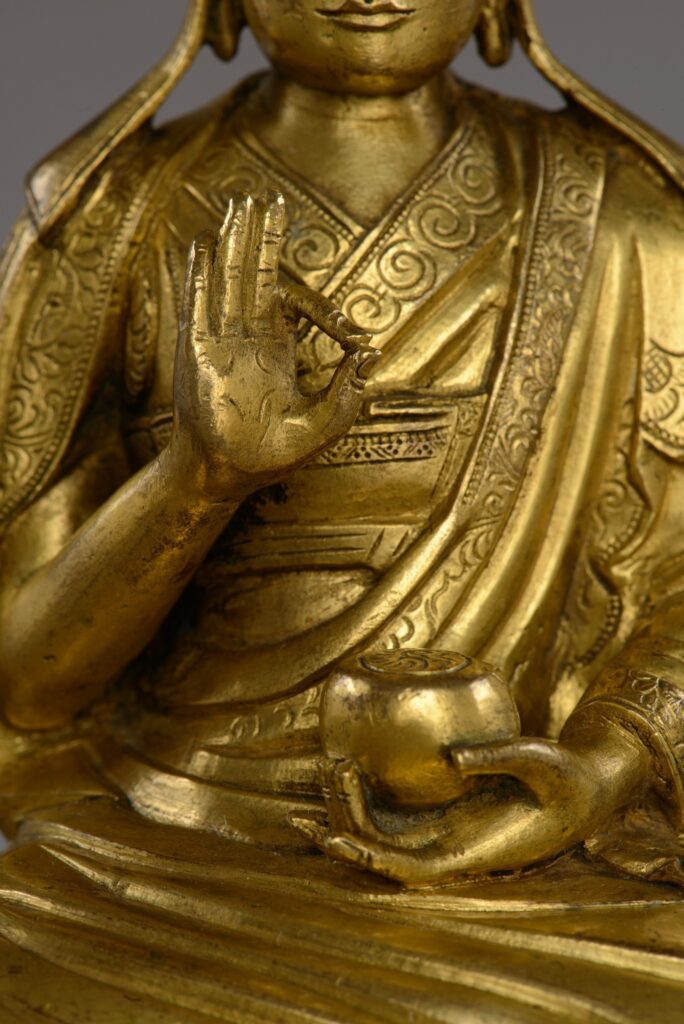Sculpture – Panchen Lama Lobsang Palden Yeshe
While visiting an exhibition, we often don’t have the time to dedicate several minutes to each object – to examine the details or read the description thoroughly. That’s why the curators at the Asia and the Pacific Museum select one object from the collection each month and encourage a closer, more in-depth exploration of its history.
A Buddhist altar statuette depicting the sixth Panchen Lama (the third to bear this title), Lobsang Palden Yeshe (1738-1780). This high Buddhist dignitary, in accordance with the role assigned to his office, announced the finding of the next Dalai Lama (in this case it was the eight Dalai Lama) and gave him monastic ordination and Buddhist religious teachings. The role of tutors of subsequent Dalai Lamas is assigned to the Panchen Lamas by the creator of their office – the great Fifth Dalai Lama (ruling over Tibet 1642-1682). Their title is translated as “great scholar” and is a combination of the Sanskrit term pandita , meaning scholar, and the Tibetan term chenpo , meaning great.
The Panchen Lamas are second in the hierarchy of their order, or school, the Gelugpa (“Tradition of Virtue”), after the Dalai Lamas. This order/school, one of four in Tibetan Buddhism, dominated Tibet politically from the 17 th to the 20 th century: the Dalai Lamas were not only the religious but also the political superiors of Tibetan Buddhists. The current Fourteenth Dalai Lama has relinquished this
latter role.
The seat of the Panchen Lamas was the Tashilunpo monastery near the city of Shigatse in Tsang Province in southern Tibet. The sixth Panchen Lama is shown in rather tight monastic robes, a large outer robe, and the pointed hat of a Gelugpa order scholar. He sits on two rectangular cushions covered with a carpet richly engraved with plant patterns. The details of his face are shown with precision. In his left hand he holds a monk’s alms bowl, his attribute (but he is sometimes depicted with a religious book of an elongated shape typical in Tibet), and his right hand is raised to the height of his heart in a gesture of argumentation.
Photo: Łukasz Brodowicz / the Asia and Pacific Museum, Warsaw
Tibet, 2 nd half of the 18 th century
gilded brass
dimensions: 17 x 12 x 8.5 cm
inv.no: MAP 11954

![grafika z tekstem [journeys to the east]](https://www.muzeumazji.pl/maip/uploads/2022/08/baner_strona_english_tn-1140x220.jpg)





